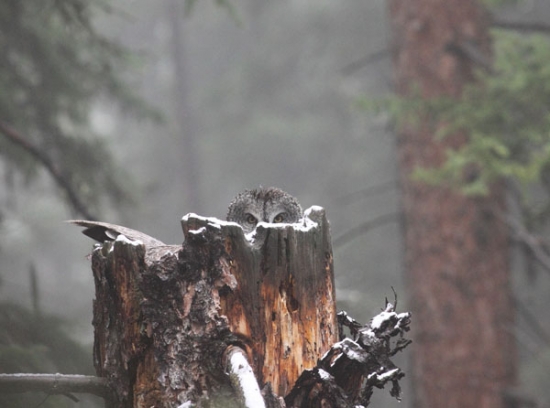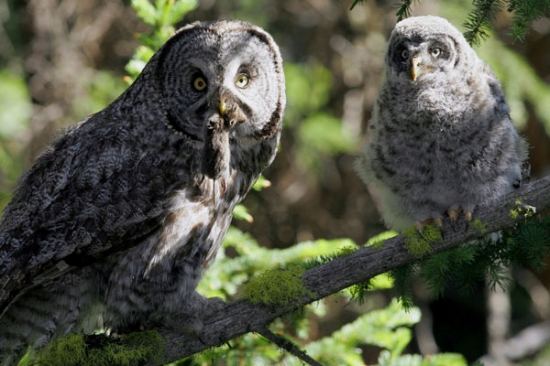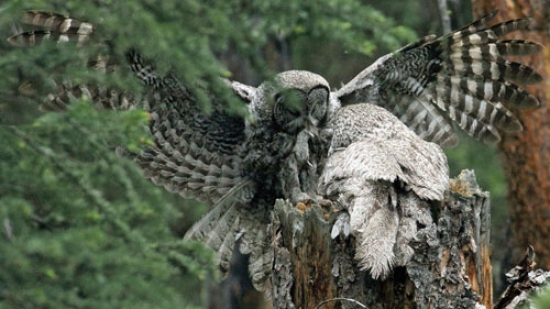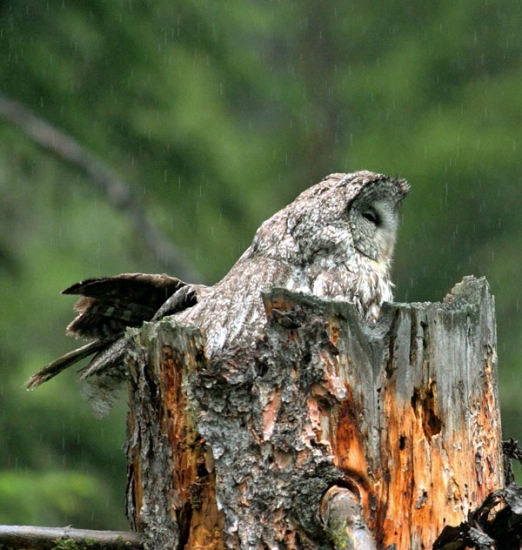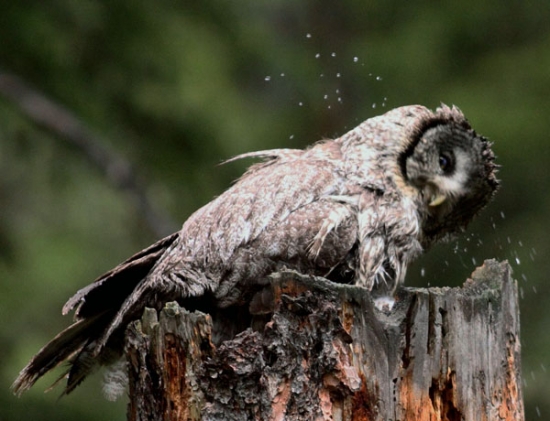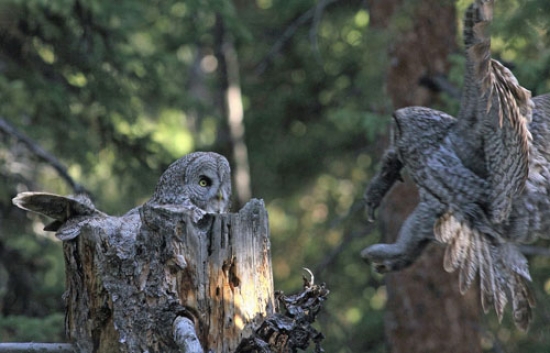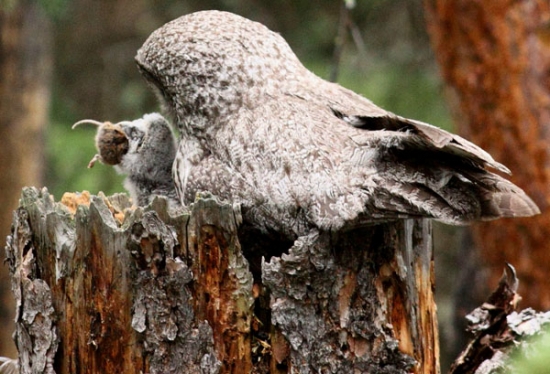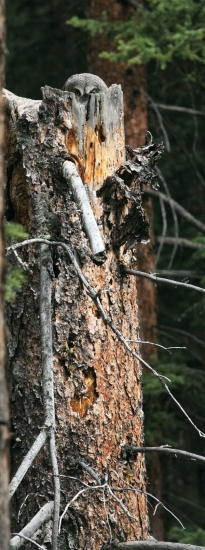Beartooth Great Gray Owl Nest
Part 1 of 3by Dan Hartman
July 14, 2014
Eight years ago Cindy, Kelly, Cassie and I were searching a bog area for a great gray owl nest. I had just found the perch tree and knew we were close. Cassie and I had been on the hunt since 6AM. Kelly and Cindy joined towards evening. It was now getting dark and raining lightly. Our car was a good ways away. I reluctantly looked around and proclaimed it was time to give up. "We'll try again tomorrow.""But, I see the owl", objected Cassie.
She pointed to a 35 foot snag standing in a small meadow. A round gray head showed from the top.
That year only one of three chicks survived to fledging. We watched him off and on till fall. The next year Cassie and I located the owl pair in a hawk nest a half mile farther back in the woods. Tragedy struck that summer as both adults were killed on the highway, however, at least one chick did survive.
Years went by. Seven to be exact. Every spring I anxiously checked the two nests. The snag was always empty, while the hawk nest usually was occupied by a red tail.
Late May of this year I finally got around to checking my Beartooth nests. I have a dozen nests the great grays have used over the last 25 years. Each year I try to make a point of checking each and every one of them. This year the Pebble Creek nest had already given me one nesting pair. Anyway, back to today. It was May 31st and I climbed the last steep hill that gave a vantage point of the old snag. I looked through the pine boughs. Nothing. I didn't really expect to find anything. But wait! Did I glimpse a bit of silver? I moved to a better spot. Sure enough. A face was looking back at me! How about that! After eight years!
She was sitting low so I assumed she must still be on eggs. On my drive home I got to thinking. The pair that originally used the snag were both long gone. The only owl that had a connection with this nest was the lone surviving chick. Could this be her now sitting in the nest? I'd like to think it is.
June 5th The male brought in a gopher which the female ate. So she's still on eggs. You can tell when food is on the way by the sounds of the robins. If they are barking that means the male great gray is in the area. If they're making a consistant whirling sound, he's on his way in with food.
June 8th I arrived at the nest at 7:30 AM. It snowed during the night so I was getting soaked by snow melting from the boughs above me. it soon turned foggy, which made for good photographs. When the sun finally popped, the female appeared to preen a chick beneath her. When she settled down again in she sat tight which means some eggs are hatched and some not.
June 11-13 Female begging from nest but no food arrived. Still can't see chicks.
June 20th Saw two chicks. One with eyes not open yet.
June 21st No feeding at the nest, but did see three chicks!
June 25th Finally a feeding. To my surprise the largest chick ate it whole. This doesn't bode well for the third chick which I affectionately call Pea Picker. I've always said, the third chick lives until the prey is eaten whole. After that his chances are slim. Let me explain why. As long as the female shreds the catch, each chick will get some portion of food. But when the prey is eaten whole, only one gets fed at a time and by the time a third gopher is delivered to the nest the first chick simply gets fed a second time.
A large fresh bear scat just above me.
